|
Clarity
As diamonds are growing in the earth, the temperature, pressure, and cooling of each of the diamond's growth phases are not constant. As a result, internal features are formed. These features are called inclusions. Any external features are referred to as blemishes. The clarity of a diamond is the measure to which it is free from these internal and external features.
Diamond Wedding Tradition
The custom of exchanging wedding rings dates back as far as the
comic Roman poet Plautus in the 2nd century BCE. Wedding rings were
then valued because of interior inscriptions recording the marriage
contracts signed in the presence of the Emperor's image. The custom
was continued and mostly Christianized by the 4th century by St.
Augustine. Byzantine wedding rings are thick gold bands with round
or oval bezels depicting the couple face to face, or receiving Christ's
blessing of their union. The tradition of giving rings in the engagement
and marriage ceremony as tokens of everlasting love has taken the
diamond into its present-day popularity.
Today as throughout the centuries, the diamond continues to embody
deep human expression of purity, strength, solarity and eternal
love.
Type of Flaws
Not all flaws are necessarily bad. Minor inclusions and blemishes can help prove the authenticity of a diamond or can even act as a fingerprint to help keep your diamond from being switched. Although there are some minor advantages, it is important to know which flaws you need to avoid. The following flaws take away from the beauty and durability of diamonds:
Large Chips - Large chips will likely grow larger through normal wear. These flaws are also very noticeable and detract from the beauty of the diamond.
Large Cloudy Areas - The milky areas restrict the diamond from displaying the transparent quality that is so desired in a diamond.
Large Colored Lines and Blotches - Any large white, black, or colored lines that can be seen with the unaided eye, should be avoided. Flaws of this nature not only take away the diamond's beauty, but they also represent a threat to the diamond's durability.
Large Cracks - Large cracks, too, are a threat to the durability of a diamond. Through normal wear, the cracks can grow larger.
Clarity Grading System
The most widely used system for grading a diamond's clarity was developed by the GIA (Gemological Institute of America). Each grade and description was developed so that trained gemologists all over the world working with a ten-power magnification could all give a diamond the same grade.
- FI - Flawless, no blemishes or inclusions- Ordinary wear could cause a flawless diamond to lose its flawless status, and therefore they are rarely used in jewelry.
- IF - Internally Flawless, no inclusions and only insignificant blemishes - Diamonds, with no inclusions and only tiny scratches or pits that can be removed by repolishing, are classified as IF.
- VVS-1 & VVS-2 - Very, Very Slightly Included, very minor inclusions that are difficult to see - The inclusions in this grading are so small that the average person will likely not find them under a ten-power microscope.
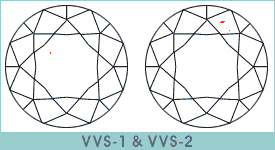
- VS-1 - Very Slightly Included, small inclusions that are difficult to see - An average person has a very hard time finding inclusions on diamonds in this category when using a ten power microscope.
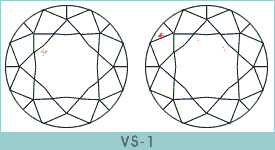
- VS-2 - Very Slightly Included, small inclusions that are somewhat easy to see - The inclusions on a diamond in this category are the same as those in VS1, but the inclusions are more numerous or larger.
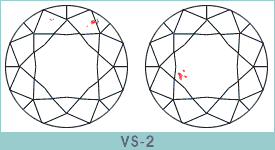
- SI-1 - Slightly Included, inclusions that are easy to see - The unaided eye probably cannot see any inclusions.
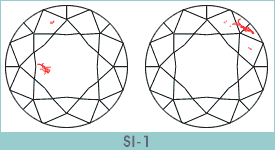
- SI-2 - Slightly Included, inclusions that are very easy to see - The inclusions of these diamonds can be seen through the bottom of the stone, but not normally through the top.
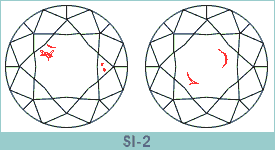
- I-1, I-2, I-3 - Imperfect, inclusions that are obvious - The inclusions of diamonds in these categories are easily seen. Diamonds with an I3 rating often look shattered. I2 and I3 diamonds may have inclusions that could affect the durability of the diamond.
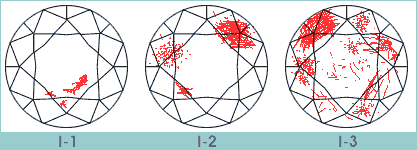
|